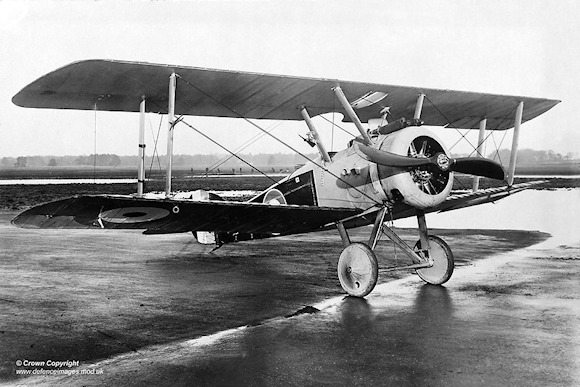Il Sopwith Camel it was one of the most important British biplane fighters active in the First World War. Famous for its “marked maneuverability”; the aircraft was developed by the Sopwith Aviation Company, and nearly 5,500 examples were built. The main users of the biplane were the Royal Flying Corps, the Royal Naval Air Service and the Royal Air Force (established on 1 April 1918).
The first prototype of the Camel took off for the first time on December 22, 1916, and entered active service in June 1917. Numerous sub-series and versions of the vehicle were built, the main one being called F.1; other versions included the 2F.1 Ship’s Camel, which operated from aircraft carriers (following photo); the Comic Night Fighter; The T.F.1, a well-armored fighter used for raids against ground targets. In addition, there was a two-seat training version.
The aircraft proved to be valuable from an aeronautical point of view. However, it took a particular skill to fly them. In fact, only after having mastered them did they prove to be “docile” to the controls like few other single-engines of the same era.
Noteworthy was the ascent speed of the Camel, very sublime for the period: it was able to reach 2000 meters in 6 minutes.
Il Camel it was born, essentially, from the need to have a means capable of effectively countering the German fighters Albatross. During the war the biplanes of His Majesty turned out to be better from the point of view of maneuverability than the Albatros D. III e D.V. It should be emphasized that the D.V entered service in May 1917.
The trial by fire for the British fighter took place on 4 July 1917 about fifty kilometers north-west of Ostend (Belgium).
The aircraft was used – practically – on all war theaters, and was able together with the “colleagues” Royal Aircraft Factory SE5 e SPAD S.XIII to ensure air superiority against the aircraft of the Kaiser.
Beginning in the summer of 1917, i Camel they were even assigned to the territorial defense of the United Kingdom.
The aircraft was used with particular success to intercept and shoot down the bombers of the German Empire. In this regard, we can recall an action carried out – between 20 and 21 May 1918 – by a combined force of Camel e Royal Aircraft Factory SE5 against twenty Gothas e Zeppelin-Staaken R.VI; three German bombers were shot down, two more were wiped out by anti-aircraft fire and another was lost to engine failure.
It should be noted that the Sopwith Camelas a ground attack fighter, did not give the desired results.
During the war the aircraft was also used by other air forces, including the United States Army Air Service.
Il Camel was withdrawn from active service in the winter of 1920 (UK).
Il Sopwith Camel (F.1) had a wingspan of 8.53 m, height 2.59 m and length 5.72 m.
The empty weight was 422 kg, while loaded 659 kg.
Engine: 1 Clerget 9B, power 130 HP. The maximum speed was about 180/190 km/h and the ceiling altitude was 5800 m.
Armament consisted of 2 7.7mm Vickers machine guns.
